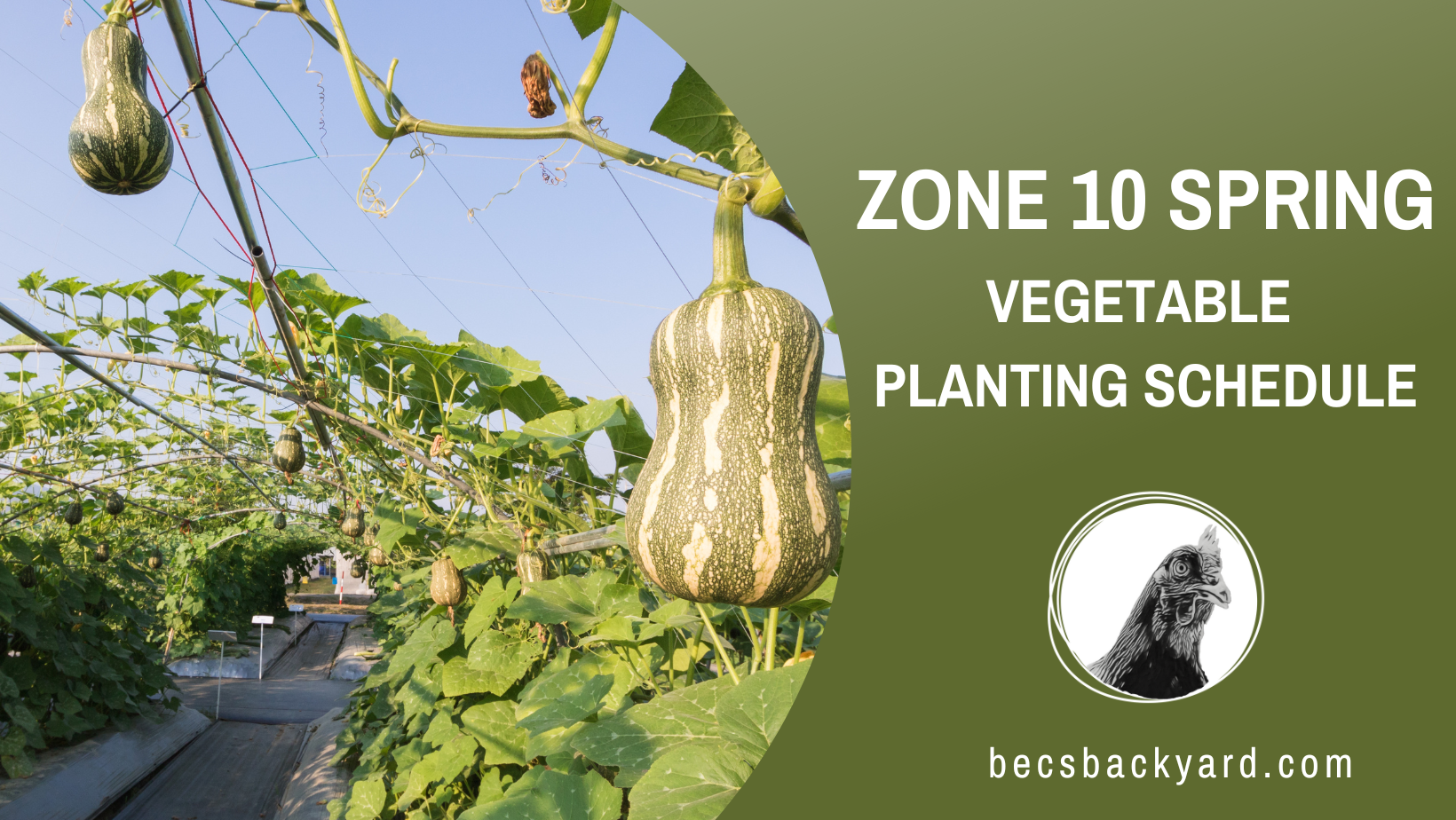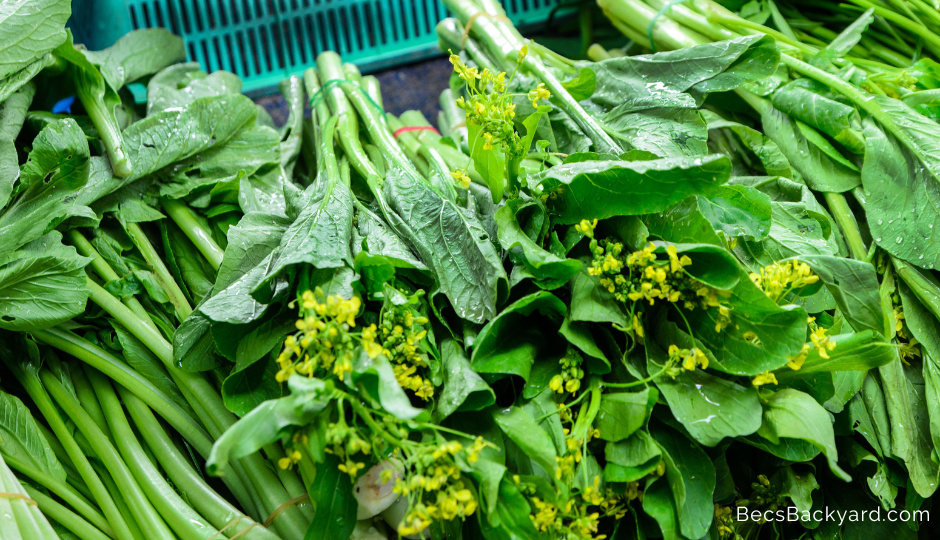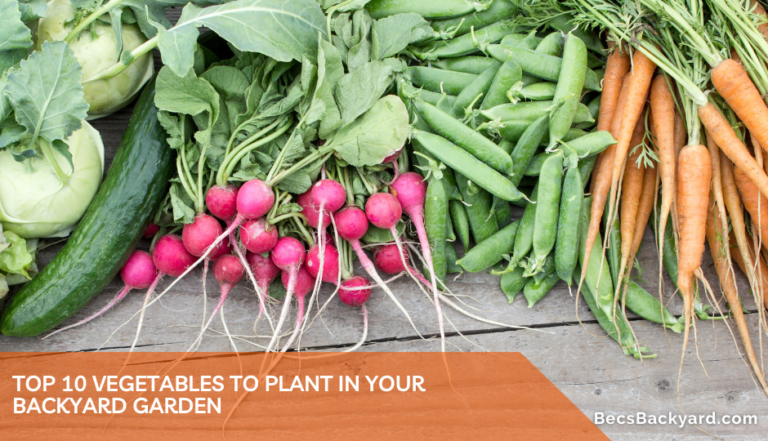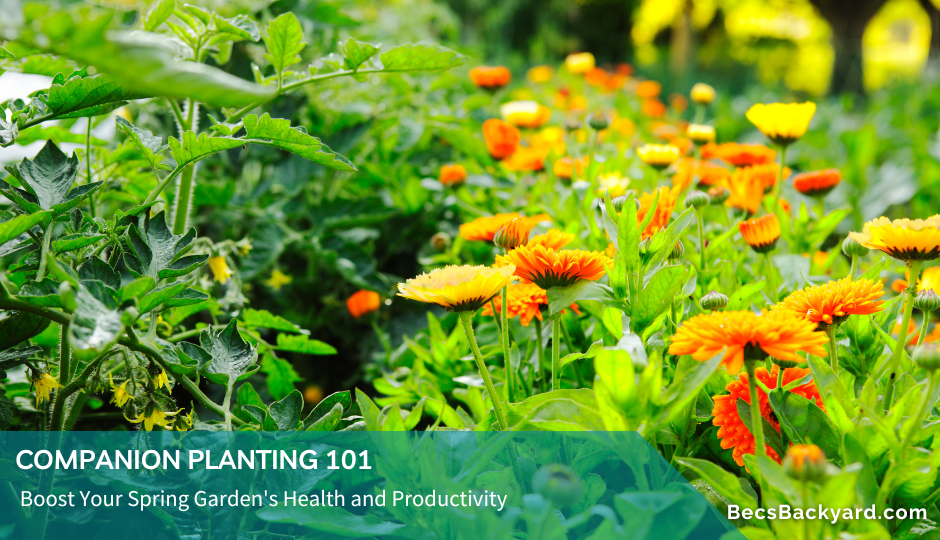Zone 10 Spring Vegetable Planting Schedule: Your Essential Guide

Preparing a Zone 10 Spring Vegetable Planting Schedule is essential for maximize your gardens outputs. Gardeners in Zone 10 enjoy a warm climate that is conducive to a long growing season, extending the opportunities for planting a variety of vegetables, herbs, and flowers. Spring in this zone signals the start of a favorable planting period. The frost-free dates typically range from January 30th or earlier until late November to December 30th, giving Zone 10 one of the most extended planting calendars.
During the spring months, the soil temperature in Zone 10 is ideal for sowing seeds of both cool and warm-season vegetables. It is a time when gardeners can take advantage of the still moderate temperatures to grow a range of crops that thrive in this unique growing window. Vegetables like tomatoes, peppers, cucumbers, and squash can be planted alongside cool-season favorites such as beets, broccoli, and kale.
The period also presents an opportunity to incorporate flowers and herbs into the garden, enhancing its aesthetic and biodiversity. Spring offers the perfect conditions for establishing plants like begonias and dianthus, as well as herbs such as tarragon and thyme, which can enrich the garden with their flavors and fragrances. Gardeners in Zone 10 can expect a bountiful harvest with the right planting schedule and attention to their garden’s needs.
Understanding Zone 10 Climate
The climate within USDA Zone 10 is predominantly mild and free from extreme cold. In this region, gardeners enjoy a long growing season, which is conducive to a wide array of plant life, including a variety of vegetables.
Frost Dates:
The locale typically experiences its last frost date by January 30th or earlier, marking the end of the coldest period. Conversely, the onset of cooler temperatures leading to the first frost does not occur until much later in the year—between November 30th and December 30th. These dates are critical for gardeners, influencing when to start seeds indoors and transfer seedlings outside.
Temperature Range:
Zone 10 is characterized by a warm climate, with average minimum temperatures ranging from 30 to 40 degrees Fahrenheit. Such conditions are conducive to growing tropical and subtropical plants.
Seasonal Considerations:
Despite the typically warm climate, gardeners in Zone 10 must remain mindful of temperature variations and microclimates within the zone, which may affect planting schedules. Local weather patterns and specific site conditions could necessitate adjustments to the general guidelines.
Given its favorable climate, Zone 10 allows for a lengthy and productive growing season, inviting both novice and experienced gardeners to enjoy the rewards of a bountiful harvest. One must always remain diligent about site-specific factors that might impact gardening activities, despite the general warmth and mildness of the zone.
Zone 10 Spring Vegetable Planting Schedule : Preparing Your Garden
Successful spring planting in Zone 10 requires meticulous preparation. The focus lies in soil readiness, timely seed incubation, strategic transplanting, persistent pest control, consistent watering practices, and the application of mulch and fertilizer.
Soil Preparation
Proper soil preparation lays the groundwork for a thriving garden. Test the soil pH to ensure it’s between 6.0 and 7.0, ideal for most vegetables. Incorporate ample organic matter like compost to improve texture and fertility.
- pH Testing: Immediately rectify any pH imbalances with lime or sulfur.
- Compost: Blend in 2 to 4 inches of well-decomposed compost.
Seed Starting Indoors
In Zone 10, gardeners can start seeds indoors as early as December for a head start. Use sterile seed starting mix and maintain a temperature around 70°F to optimize germination.
- Seed Trays: Sow seeds in trays or pots under controlled conditions.
- Germination Temp: Use heating pads if necessary to maintain ideal soil temperature.


MIXC Seedling Trays Seed Starter Tray, 5-Pack Mini Propagator Plant Greenhouse Grow Kit
- High quality transparent plastic cell trays
- Adjustable vents on the humidity dome
- Bottom trays of our seed starter trays can be stacked one by one to save space.
- MIXC Seed Starter Tray contains: 5 x seed tray, 5 x bottom tray, 5 x humidity dome, 2 x garden tools, 10 x plant labels.
Transplanting Seedlings
Seedlings should be strong enough to transplant after 6-8 weeks. Harden off over 7-10 days, gradually increasing outdoor exposure. Transplant on a cloudy day or in the late afternoon to reduce shock.
- Hardening Off: Transition seedlings to adapt to outdoor conditions.
- Transplant Timing: Avoid midday sun when moving plants outside.
Pest and Disease Management
Regular monitoring is key to preventing infestations of pests like mites and insects. Introduce beneficial predators and apply organic pesticides if necessary. Rotate crops to disrupt the life cycle of common garden pests.
- Inspection: Check plants daily for signs of pests or disease.
- Organic Pesticides: Use as a last resort, focusing on target-specific products.
Watering Strategies
Maintain consistent moisture without overwatering. Implement drip irrigation or soaker hoses for efficient water delivery. Water early in the day to allow foliage to dry and reduce disease risk.
- Irrigation System: Install a drip system for efficient watering.
- Schedule: Water deeply and infrequently to encourage strong root growth.
Mulching and Fertilizing Techniques
Apply a 2-inch layer of mulch to conserve moisture, regulate temperature, and suppress weeds. Fertilize based on soil test recommendations, using balanced, slow-release fertilizers for steady growth.
- Mulch Application: Use organic options like straw or shredded leaves.
- Fertilizer Use: Apply according to specific vegetable needs and soil test results.

Planting Schedule by Crop
When planting in Zone 10, gardeners benefit from a longer growing season that necessitates an understanding of the optimal times to plant, ensuring a healthy harvest. Different vegetables, legumes, and herbs have specific planting windows that are crucial to follow for successful results.
Leafy Greens and Lettuces
Leafy greens such as lettuce, kale, spinach, arugula, and chard thrive when planted in early spring. In Zone 10, gardeners have the advantage of starting as early as February, with harvests typically ready within 4 to 8 weeks, depending on the specific variety.
Root Vegetables
Carrots, radishes, turnips, and beets can be sown directly into the ground around February. The soil should be well-draining and loose to allow for proper root development. Expect to harvest these root vegetables typically 2-3 months after planting.
Cruciferous Vegetables
For cruciferous vegetables like broccoli, cabbage, cauliflower, and Brussels sprouts, planting should commence in late winter to early spring. They require a planting window that allows for harvesting before the intense heat, usually by late spring or early summer.
Nightshades and Warm Season Crops
Nightshades such as tomatoes, peppers, and eggplant, as well as other warm-season crops like sweet potatoes, should be planted once the danger of frost has passed, often in March. They need warmer soil temperatures and will typically be ready to harvest in the summer months.
Legumes and Other Vegetables
You’ll find peas, beans, and okra do well when planted in early spring. By planting in March, gardeners can take advantage of a harvest period ranging from late spring to mid-summer. Cucumbers can also be planted during this time, with careful monitoring for pests.
Herbs and Aromatic Plants
Finally, for herbs such as parsley, dill, basil, mint, thyme, and rosemary, planting can begin in early spring. These herbs not only enhance culinary dishes but also benefit the garden as companion plants and can often be harvested multiple times throughout the growing season.
Maintenance and Harvest Tips
Proper maintenance and timely harvest are critical for a successful vegetable garden in Zone 10. Adhering to specific techniques ensures the garden remains healthy and productive throughout the growing season.
Regular Garden Maintenance
Watering: Gardeners should ensure consistent moisture by regular watering, especially during dry spells. Vegetables typically require at least an inch of water per week, either from rainfall or irrigation. A drip irrigation system is recommended to deliver water directly to the plant roots, reducing evaporation and water wastage.
-
Mulching: To conserve moisture, control weeds, and maintain even soil temperatures, apply a 2-3 inch layer of organic mulch around the plants. Straw, grass clippings, or bark mulch are suitable options.
-
Fertilizing: Apply a balanced fertilizer following the recommendations for the specific vegetables planted. Typically, a slow-release fertilizer at the beginning of the season and a liquid feed every few weeks can promote strong growth.
Harvesting Techniques
Timing: Harvesting vegetables at the right time is crucial for taste and nutritional value. Leafy greens are best picked in the morning when they are crispest. For most vegetables, they should be harvested when they are of medium size to ensure the best flavor and texture.
- Method: Use a sharp knife or pruners to cut vegetables from the plant to prevent damage. For root vegetables, loosen the soil around the plant before pulling to avoid breaking the roots.
Post-Harvest Handling
Cleaning: Vegetables should be gently washed with water to remove soil and potential pests. It is vital to dry them thoroughly to prevent mold and rot during storage.
- Storing: Most harvested vegetables can be stored in a cool, humid environment. Root crops like carrots and beets may be kept in the ground, covered with mulch, and harvested as needed. Others, like leafy greens, should be refrigerated and used relatively quickly after being picked.
Frequently Asked Questions
Planting a vegetable garden in USDA Zone 10 requires considering the warm climate and long growing season when selecting and timing crops.
What vegetables can be planted in early spring in zone 10?
In early spring, Zone 10 gardeners can plant a variety of vegetables including beans, chard, and herbs like basil and cilantro. These crops can be started from seeds as the mild winters usually do not hinder their development.
How should I plan a zone 10 vegetable garden for the spring season?
When planning a spring vegetable garden in Zone 10, it’s important to consider the last frost date and high temperatures. Begin with cool-season crops early in the season and transition to heat-loving plants as temperatures rise. Integrate organic compost into the soil for optimal growth.
Which vegetables grow best in zone 10a and 10b’s climate?
Vegetables that thrive in Zone 10a and 10b include tomatoes, peppers, eggplants, and cucumbers. These vegetables prefer warm temperatures and should be planted after the threat of frost has passed.
Can you list a planting schedule for spring vegetables in zone 10 areas of California?
In Zone 10 areas of California, gardeners can typically start warm-season crops like tomatoes and peppers indoors in February. By March, they can directly sow seeds of beans, corn, and squash as the soil warms up.
In USDA zone 10, when is the ideal time to start a spring vegetable garden?
The ideal time to start a spring vegetable garden in USDA Zone 10 is often after the last expected frost, which can be as early as late January. This allows for an extended growing season and the successful establishment of both cool and warm-season vegetables.
What is the recommended calendar for planting fruits and vegetables in zone 10a?
For Zone 10a, a typical planting calendar has cool-season crops starting in late winter, around January or February, and making way for warm-season fruits and vegetables such as melons, pumpkins, and sweet potatoes in late spring, around April to May.







